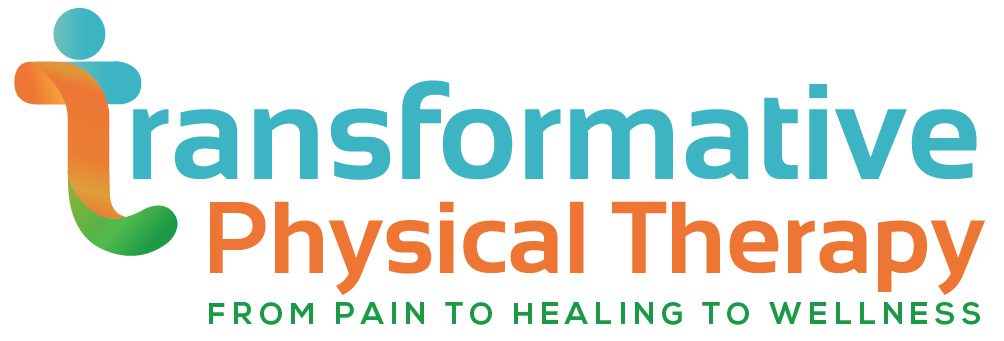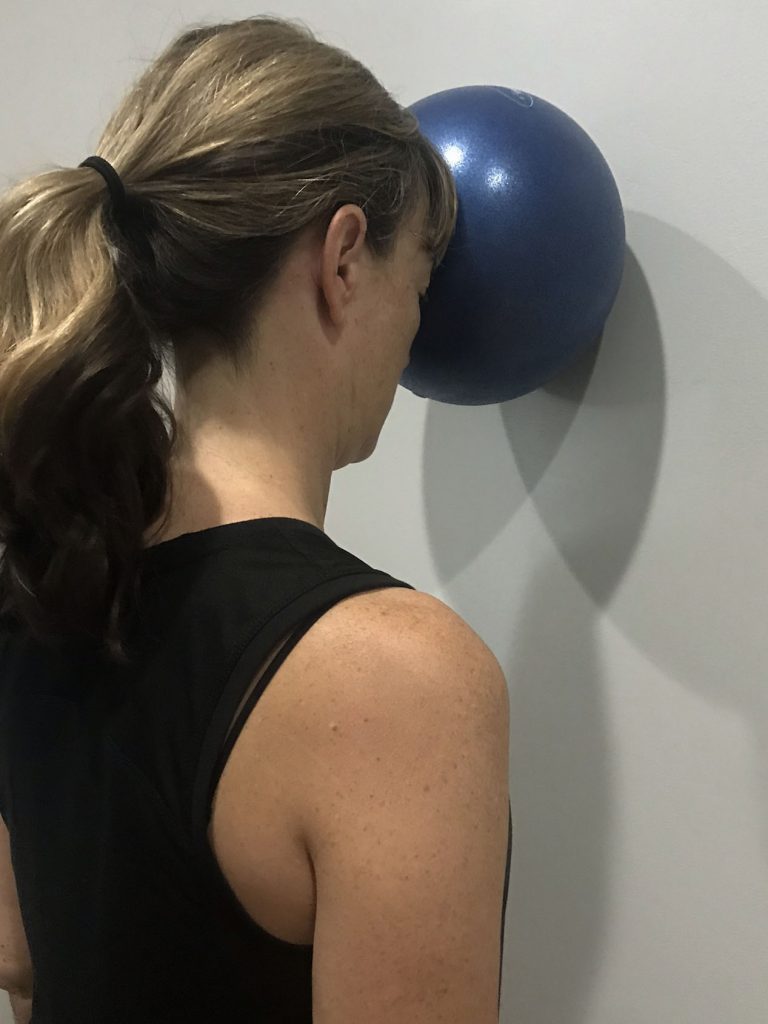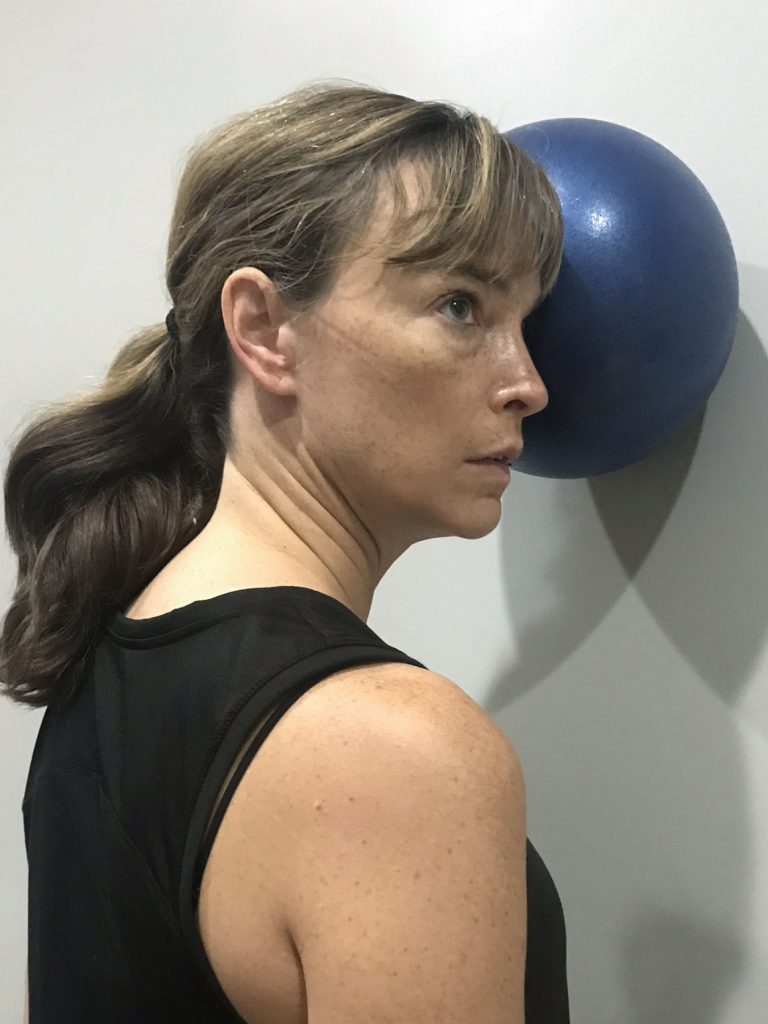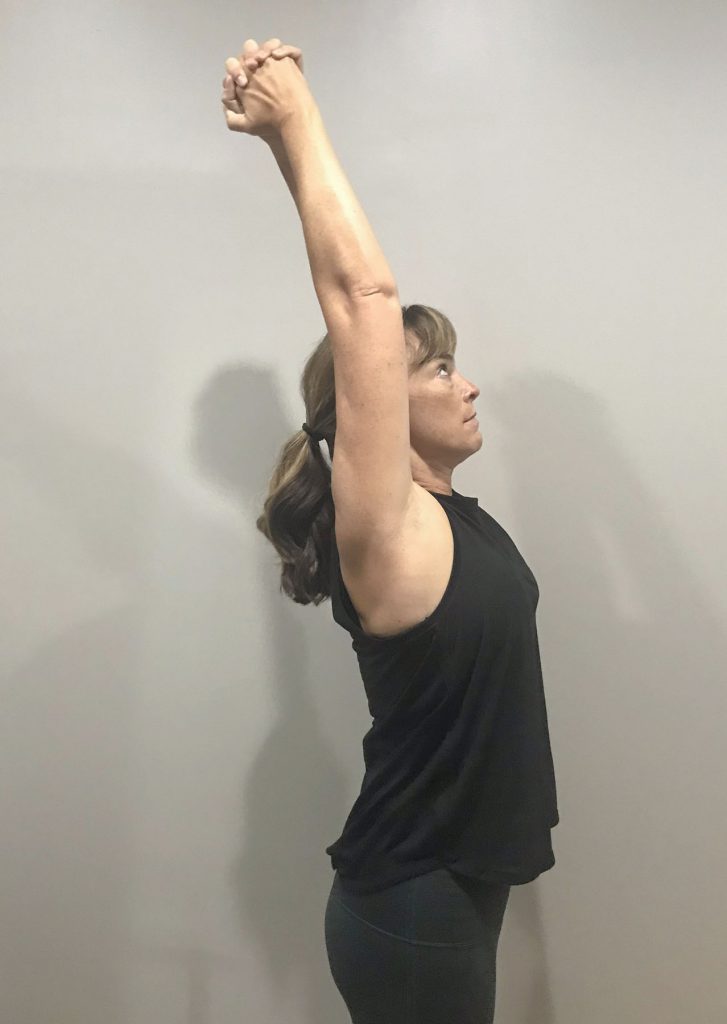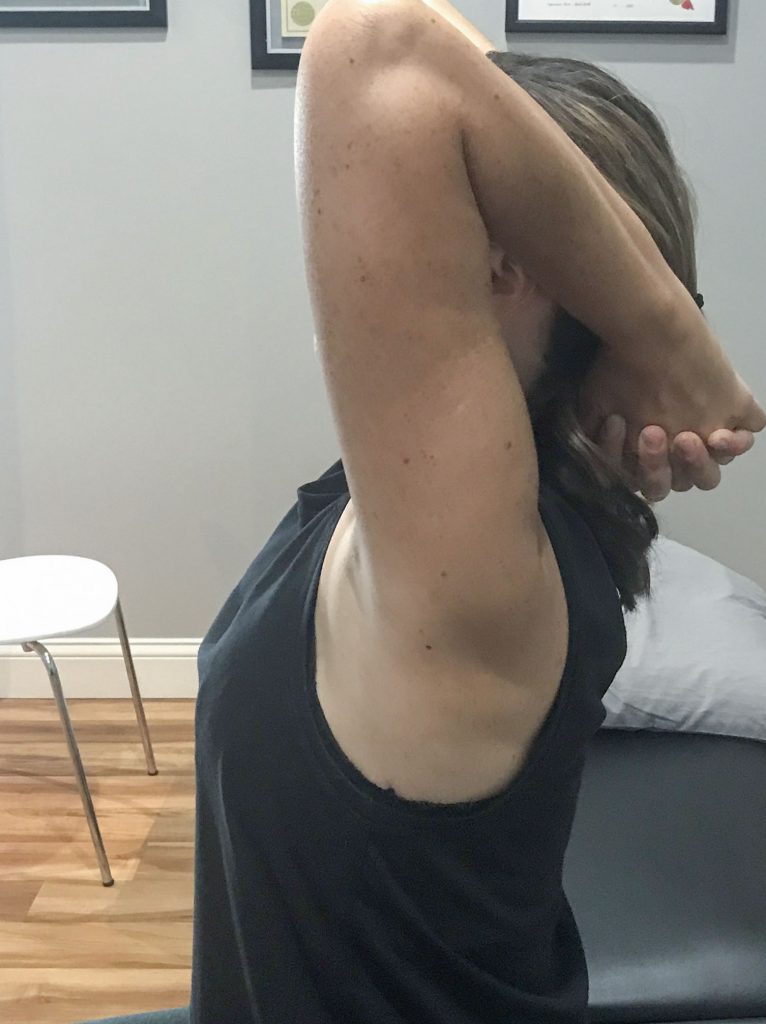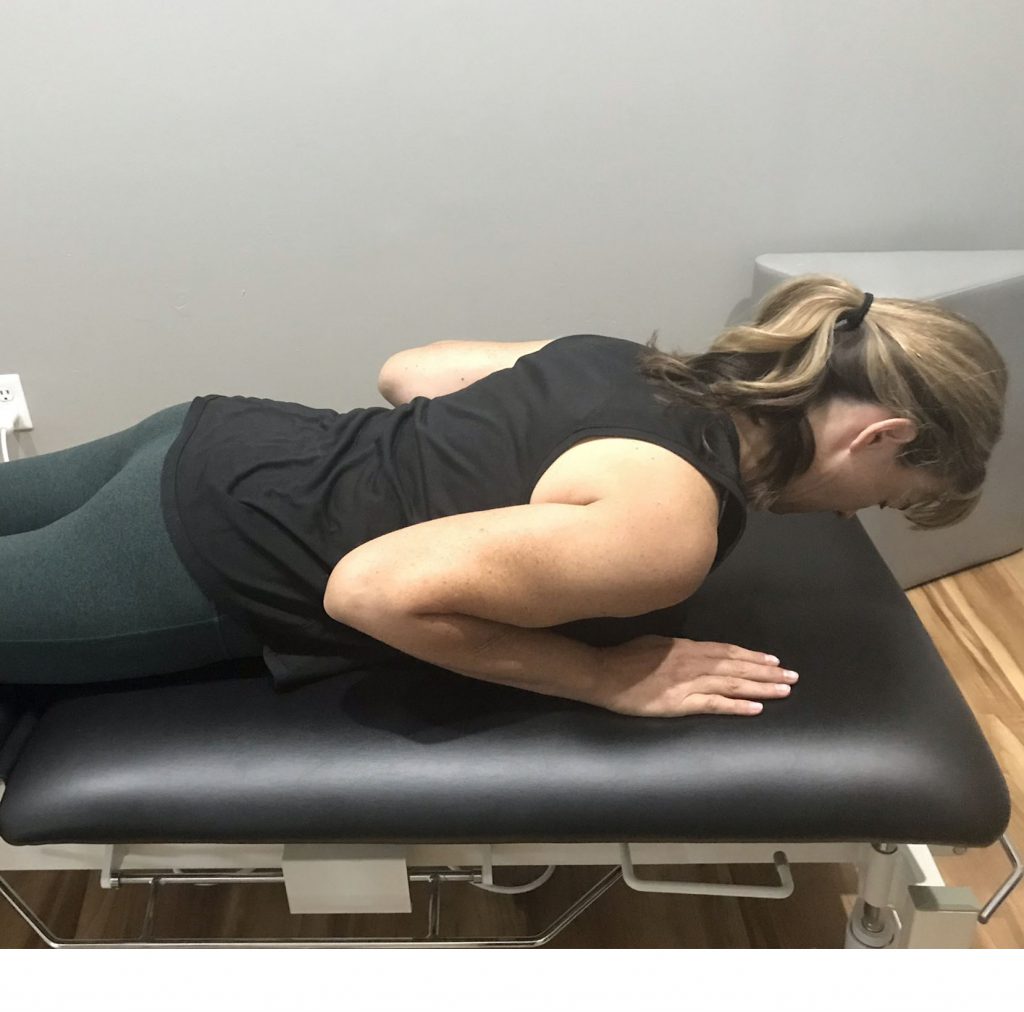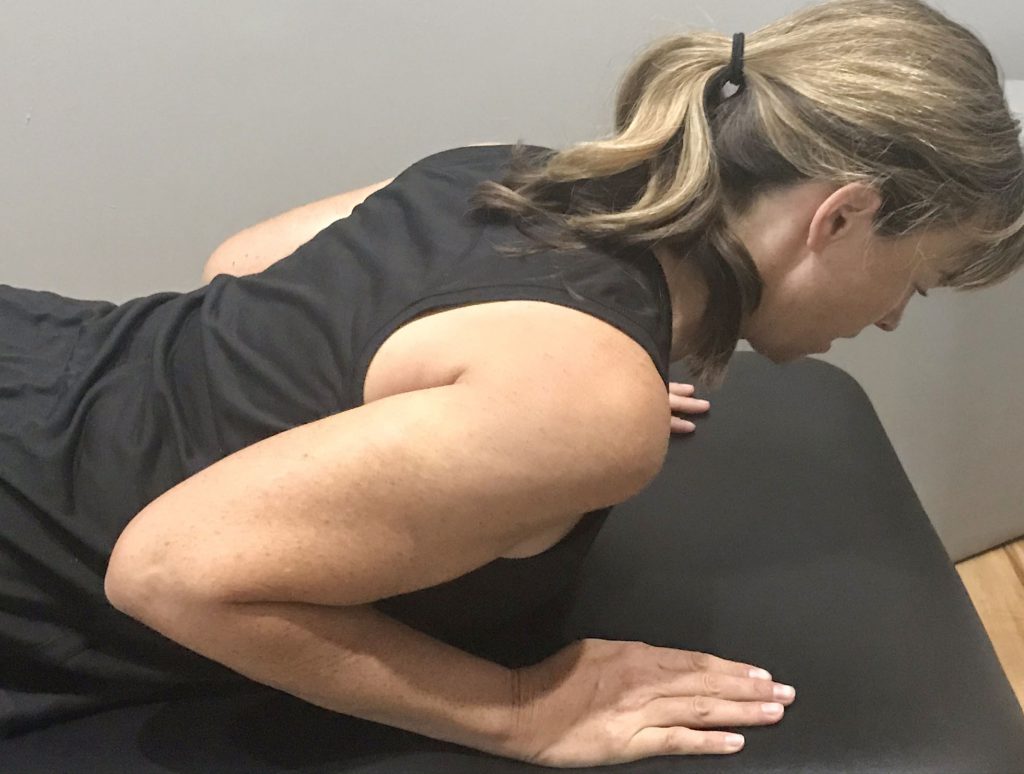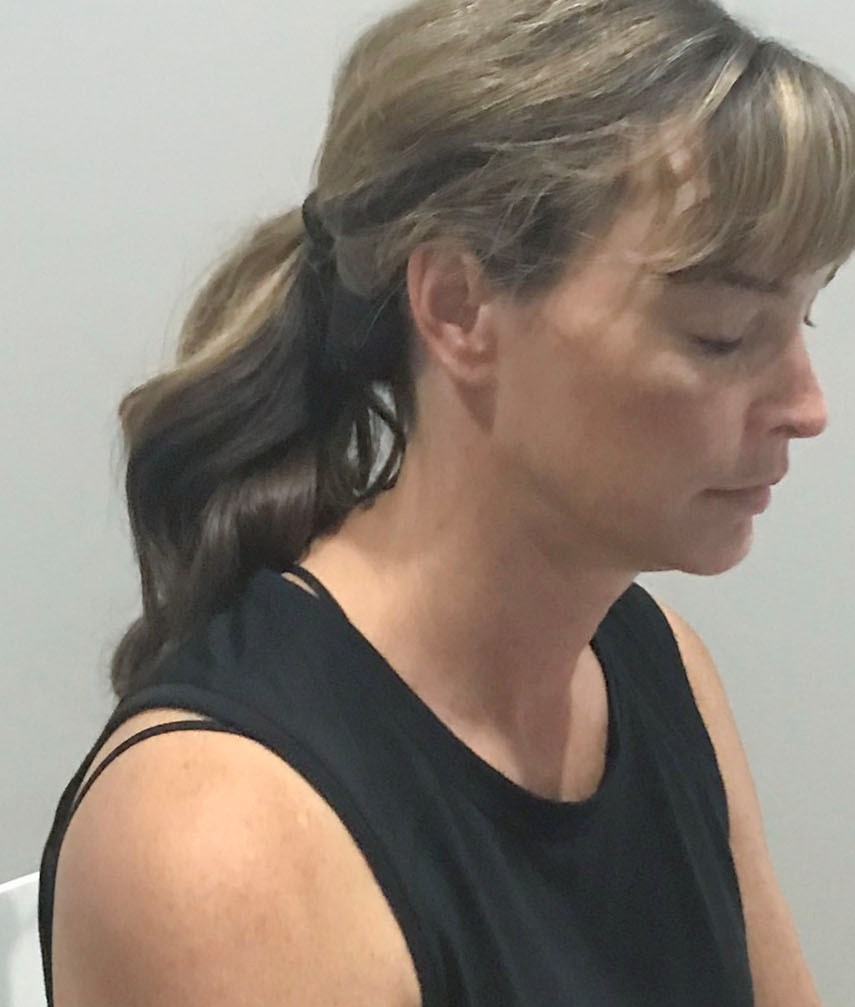
Have you been sitting more, spending more time looking at your computer, phone or reading? Doing extra cleaning, gardening and yardwork? All these things can be hard on the neck and create pain. Neck pain also causes referred pain into the shoulder blades, out to the tip of the shoulder or down the arm and even numbness in your arm or fingers.
What can be done to manage this area so it does not become a real pain in the neck?This month I want to give you some postural tips, as well as a few simple exercises to keep your neck happy and moving.
First let me give you a simplistic anatomy lesson. Your neck is composed of seven small vertebrae with a smaller area for the spinal cord and nerves to come through, compared to the low back.
Degenerative changes are common even for people in their 20’s. Degenerative and disc problems are the most common between the 5th and 6th (C5/6) and the 6th and 7th (C6/7) vertebrae of the lower neck. This leads to decreased space for the nerves and the spinal cord.These changes can occur as the curve in your neck changes. The vertebrae are not stacked in a straight line, but in a curve. When the chin juts out the vertebrae shear against each other and the curve is decreased. When the chin is held too high the curve increases. Both situations can increase stress on the spine. For this reason I tend to avoid neck circles.
There are several big muscles running from your spine out to your shoulders and up to your neck, as well as those thick muscles along the back of your spine. When your head is hanging forward with your chin jutting out or hanging down these muscles are strained. I always like to envision them as ropes attaching your head to your body and pulling hard to keep your head attached. What follows is compression in the spine, pain, numbness, headaches, fatigue to name a few pains in the neck. Have you ever felt like your head feels too heavy to hold up?
There are deep muscles along your spine in the back and in the front that are the postural muscles that need to work to hold your head in a more neutral position and take the stress off the spine. These muscles are often weak and not working effectively. Let’s break down the motions of the neck and what you can do to help balance your head and relieve the stress.
It’s not just those 7 vertebrae that move when you turn your head, the vertebrae below in the thoracic spine each add a few degrees all the way to the bottom of your shoulder blade.
Turning your Head
Rotation: When you turn your head to the right, feel the right shoulder blade move down and in and the left move slightly up and out. This will help you activate the lower spine to rotate too.
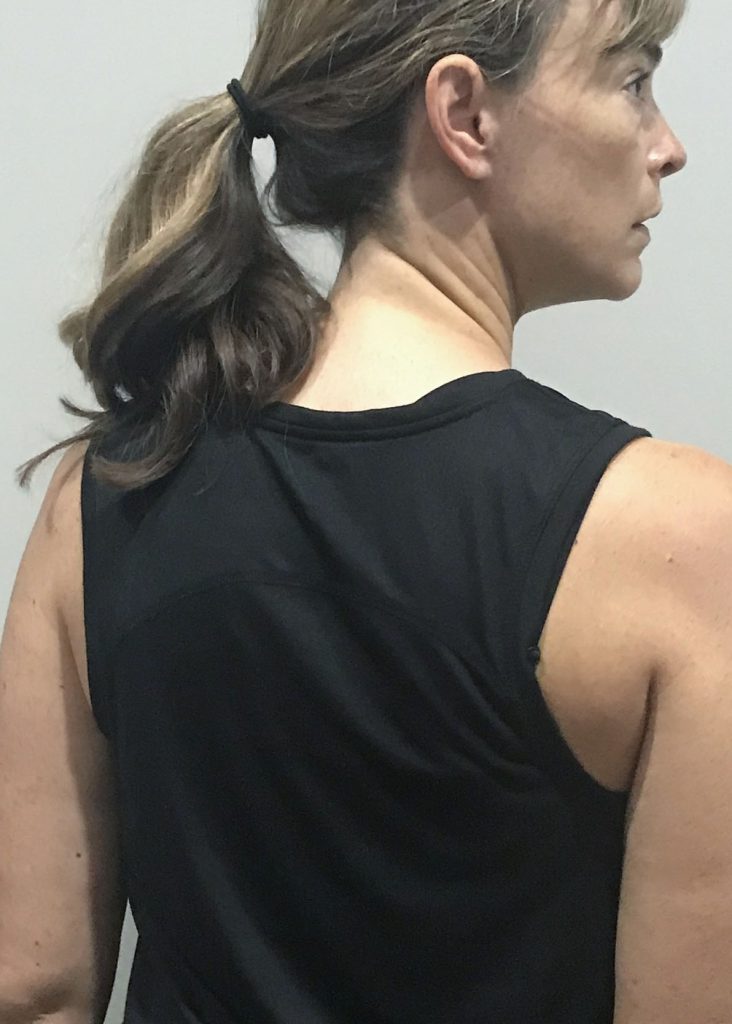
Right shoulder down and in, left up and out 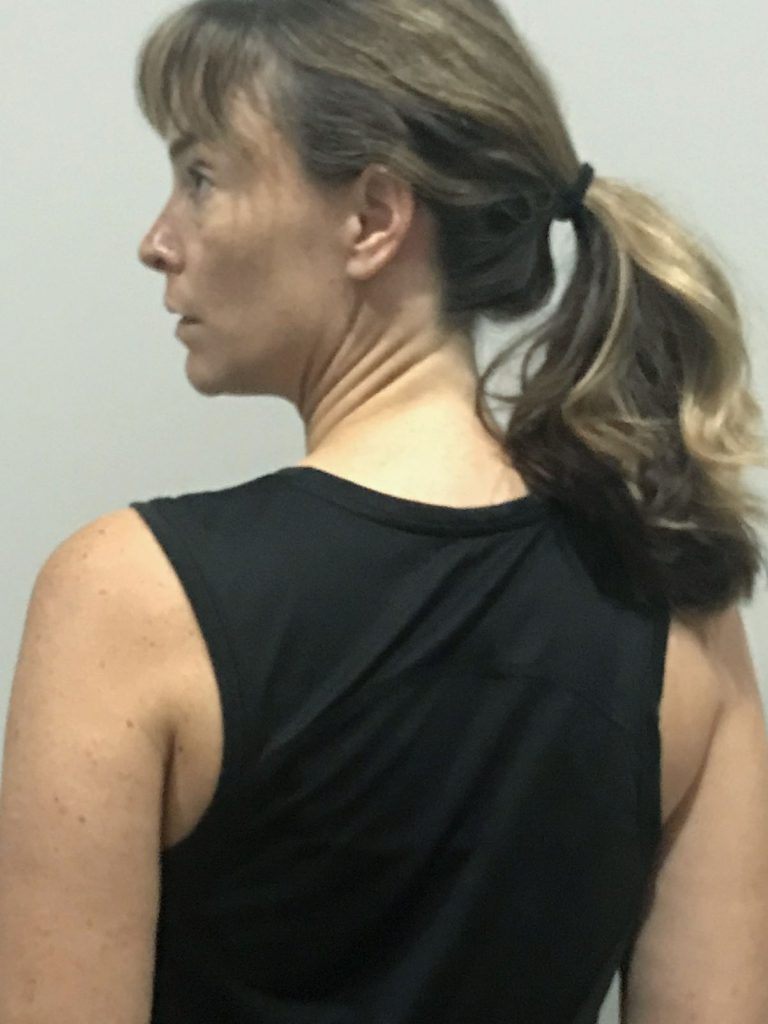
Left shoulder down and in, right up and out
- Ball on the Wall Exercise: Stand with your forehead against a ball on the wall. Step in close so you are as straight as possible. Use a light yoga or playground ball. Turn your head slowly to the right and left, letting your shoulder blades move with you. Keep your pelvis straight.
When sitting in a chair, the first step is to get in a neutral position. Take your shoulders up slightly towards your ears and then back slightly behind your ears, then let the muscles relax. Try to feel the shoulder blade come against your ribs as the breastbone lifts. Position your shoulders over your hips. Nod your chin down, towards your Adam’s Apple, not to your chest. Position your computer, phone or book so the top line is about 15 degrees below eye level. Let your eyes move as you look down the page, not jutting your chin forward (turtle neck) or letting it fall and hinge from the bottom of your neck. Place a pillow or notebook on your lap to raise and incline the laptop, phone or book and give you a place to rest your elbows, to allow the shoulders to stay relaxed.
Looking Down
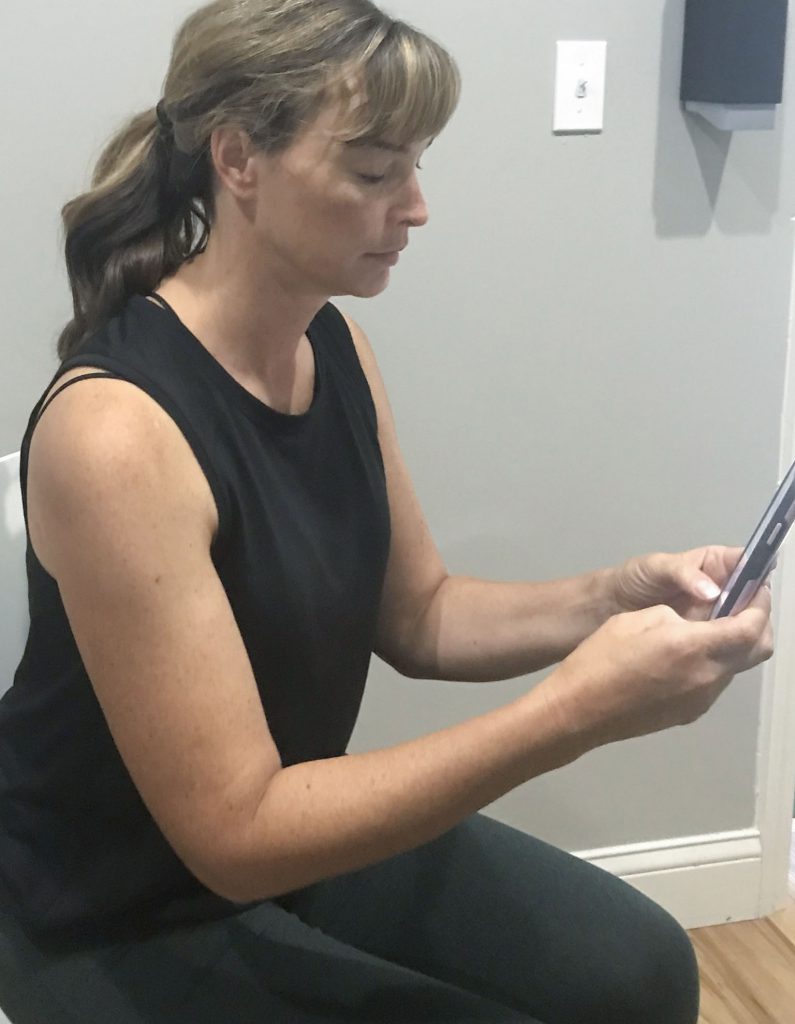
Wrong! forward head, jutted chin 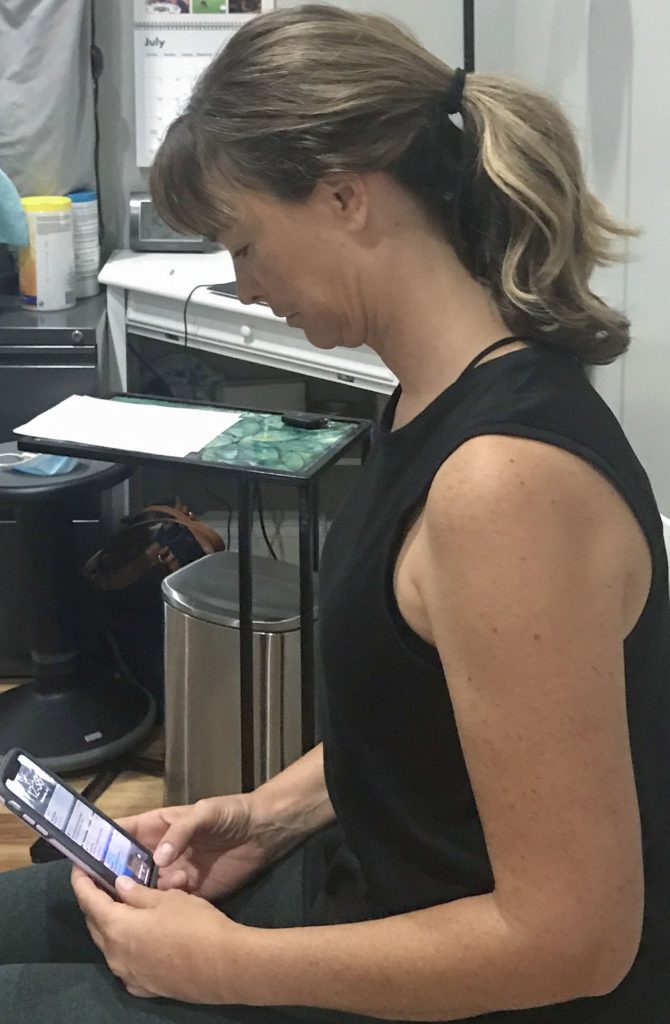
Correct 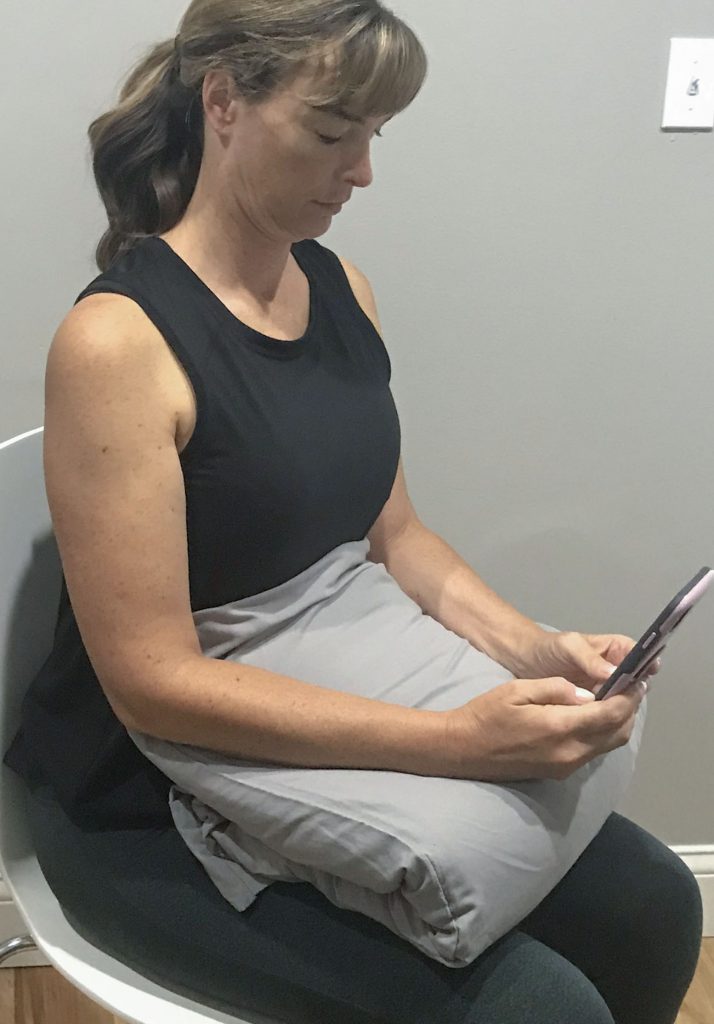
shoulders more relaxed with pillow
- Isometric exercise for deep neck flexors: Place the thumb side of your fists against your breastbone and your thumbs just under your chin. Keep your mouth closed with your teeth lightly touching. That distance should put you in a good head position. Push up gently with your thumbs to provide the resistance and don’t let your head move. Don’t push your chin into your thumbs. You should feel the muscles along your throat tighten. These muscles are actually on the front of the spine. Start with a hold for a count of 3-5, increasing to 10, then relax. Your tongue will be pushing on the roof of your mouth. As you get better, hold this and swallow 5x. This helps relax the muscles in your throat, attached to your tongue for swallowing and help them work in a more optimal position.
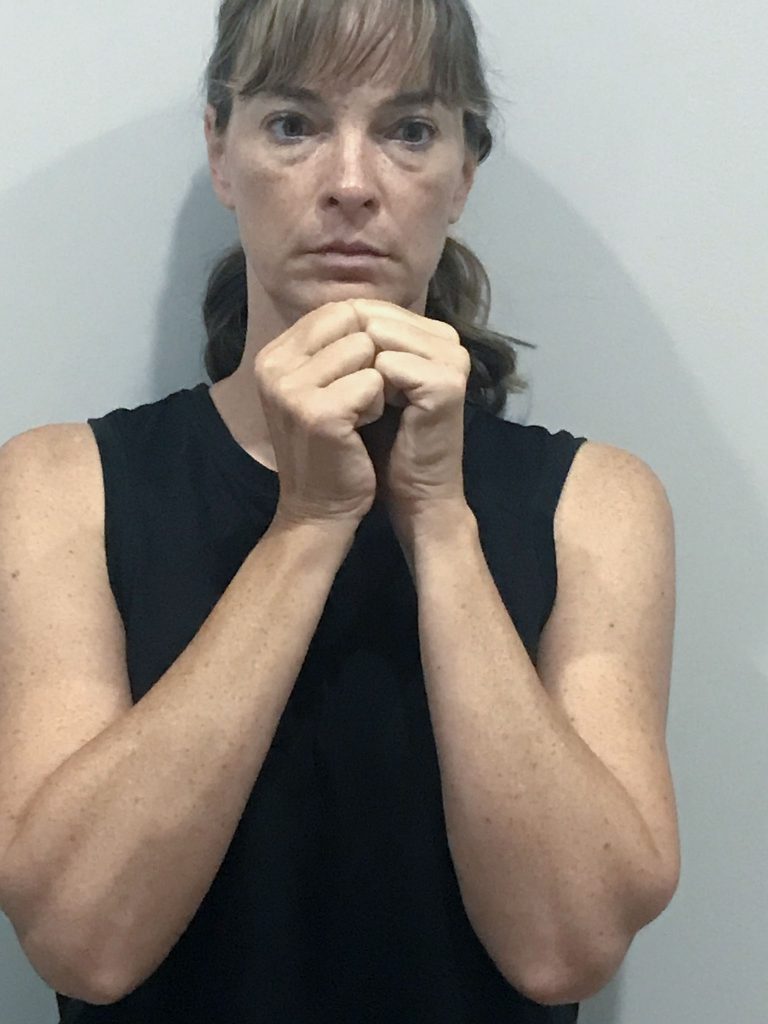
Many people like to hinge at the lower spine, especially C5 and 6 to look up. This adds to the wear and tear of these joints, discs and can inflame the nerves. Looking up requires lifting the chest or the breastbone and letting the head go back with you. It is also important to facilitate the multifidi, the deep muscle extensors to create stabilization.
Looking Up
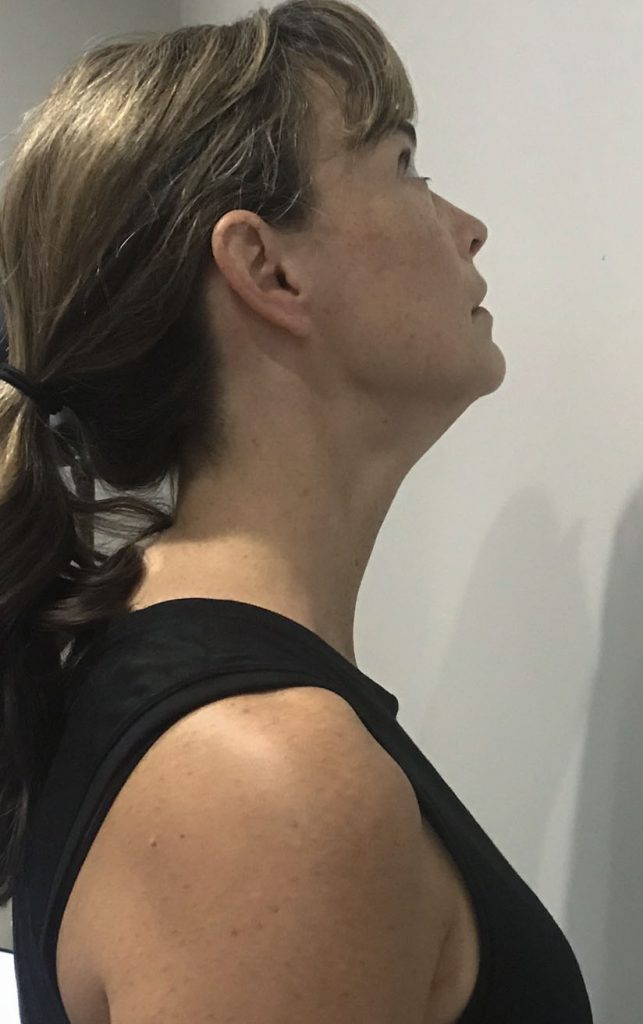
increased stress lower cervical spine 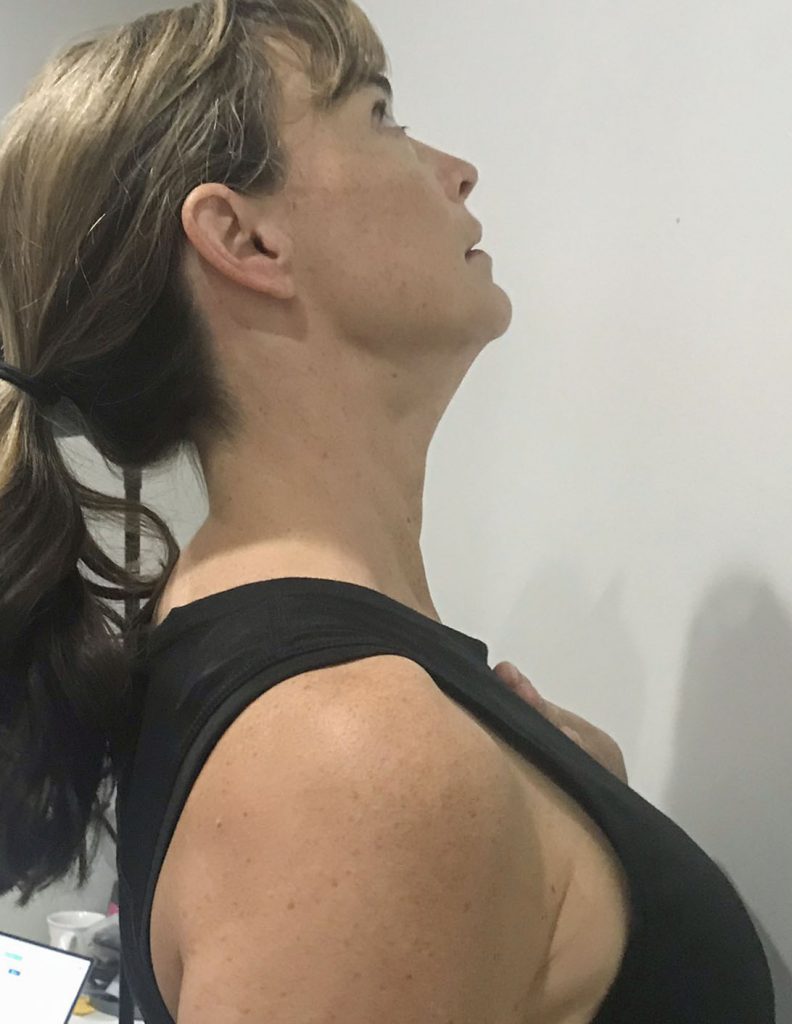
lifting through chest
- Exercise for looking up: Looking up with arms overhead: Raise your arms overhead with your upper arms against your ears. Hold in your abdominals and keep your pelvis stable. Look upward keeping your head centered between your arms, letting the chest bone rise with you. You can also do this by clasping your hands behind your head, reaching as far down the spine as possible, so your elbows are pointing up towards the ceiling. Then look up moving your arms with your head and keeping them as close as possible to your ears. Move only in the upper back not letting the low back arch.
- Cobra: Lie on the floor with your elbows bent and hands under your shoulders. Keep your pubic bone fastened to the floor and your tailbone pointing down toward your feet. You may place a pillow under your lower abdomen if this bothers your low back. Push your hands down into the floor and try to push them away from you. Peel your chest off the floor, squeezing your shoulder blades together and keeping your eyes focused just out in front of you. Your elbows start out pointing up then pivot down towards the floor. As your hands push down and away, think of your tailbone continuing to push down. The goal is to move the area between your shoulder blades, not lift completely up.
Hopefully, you will find these tips and exercises helpful. Think of your neck as a very delicate piece of architecture in your body. Keeping it centered over your shoulders is a great way to keep it working, not squawking and be able to do all activities you want. To review how your head should be positioned for sleeping, click here, https://www.transformative-pt.com/2020/03/01/positioning-yourself-for-a-good-nights-sleep/.
If you have problems with your neck, give me a call and we can check it out. I am always here to help. During this time of isolation, I have done a few visits by computer. While there is no hands on therapy on a zoom call, we can improve your posture and exercise technique.
- Special thanks to Tiffany Eckland for being my model.
Stay safe, well and keep transforming,
Judy
